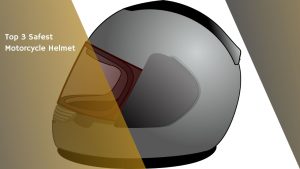Types of LED Lights – In this modern era, lighting plays a central role in creating a comfortable and efficient environment.
Through technological advancements, LED light types have become a major highlight in the transformation of the lighting industry.
Each type of LED light has unique characteristics and certain advantages and opens up various opportunities in various needs, from households to the industrial world.
Also Read
But do you know that there are several types of LED lights that you can choose according to your needs? Let’s get the explanation that we’ve prepared just for you!
Table of Contents
Types of LED Lights

1. Bicolor, Tricolor and RGB LEDs
As its name implies, these types of LEDs are the ones that are able to transmit two or more colors to illuminate the area.
A bicolor LED for example can either light up green or red, based on its flow of a current.
On the other hand, a tricolor LED can be either green, red or a mixture of the two that forms a yellow color.
The RGB is the most unique of them all, because it is able to emit either red, green, blue or any combination of these colors, thus giving it the widest color possibilities.
Also Read: “How to Choose the Right Outdoor Lighting For Your Home!“
2. Super Flux LED
Super Flux LED offers a combination of high brightness and durability in its overall construction.
Having a greater amount of light compared to typical LEDs, a Super Flux LED is widely utilized as a vehicle light.
It provides optimal lighting with high visibility, especially in various road conditions.
3. Flashing LED
The next one is the Flashing LEDs that offer the ability to flash or twinkle periodically, making them an effective tool for conspicuous signals or warnings.
The main advantage of this LED is its ability to attract attention in a clear and prominent way, making it ideal for a variety of applications that require easily recognizable visual signals.
One of its functions is in the automotive industries, flashing LEDs are often used as turn signals or indicators. Its primary function is to alert other drivers of a change in direction or intention to change lanes.
4. COB (Chip On Board) LED
Chip On Board LEDs combine multiple LEDs into a single chip for increased brightness and lighting efficiency.
Its advantage lies in its relatively small size but ability to illuminate more brightly and evenly. In a one-meter strip, it is able to hold anywhere between 400 to 800 LEDs.
Used in stage lights or studio lights, Chip On Board LEDs provide the intensive lighting solution required. Moreover, this type of LED also does not heat up and can last for a long time.
5. Miniature LED
Despite their small sizes, miniature LEDs offer a number of significant advantages, especially in applications that require a compact design.
With their small size, these LEDs are ideal for use in devices or tools that require limited space but still require effective lighting.
Miniature LEDs are able to produce a fairly bright light despite their small size, making them perfect for use in a variety of small electronic devices.
For example, in remote controls, miniature LEDs serve as status indicators or button illumination, helping users see clearly in low-light conditions.
Similarly, in portable audio devices, these small LEDs are often used to display operating status, providing important information without compromising on compact and ergonomic design.
They can be white or multi-coloured, based on the application.
Also Read: “7 Benefits of LED Lights“
6. Surface Mounted Device LED
The next on our list of the types of LED lights is the surface mount device or also known as the SMD LED.
As its name implies the SMD LEDs are mounted onto and soldered onto a circuit board, and usually used in a portable electronic device such as a flashlight.
LED Surface Mount Device does not require wiring, but instead uses a small chip, this means it’s best handled by automated assembly equipment, rather than with human intervention.
It is widely used in a wide variety of settings, including as an indicator lights on electronics, up to aircraft instrument panels.
7. Organic LED (OLED)
Organic LED (OLED) uses organic materials such as polymers or small organic molecules as its optically active element.
Its advantages include the ability to be mounted on flexible surfaces and the ability to produce sharper, more vivid colors.
OLEDs are often applied in various electronic devices such as televisions and smartphone screens, providing users with a great visual experience.
So there you have it! The 7 types of LED lights to broaden your knowledge about the LED lights!















